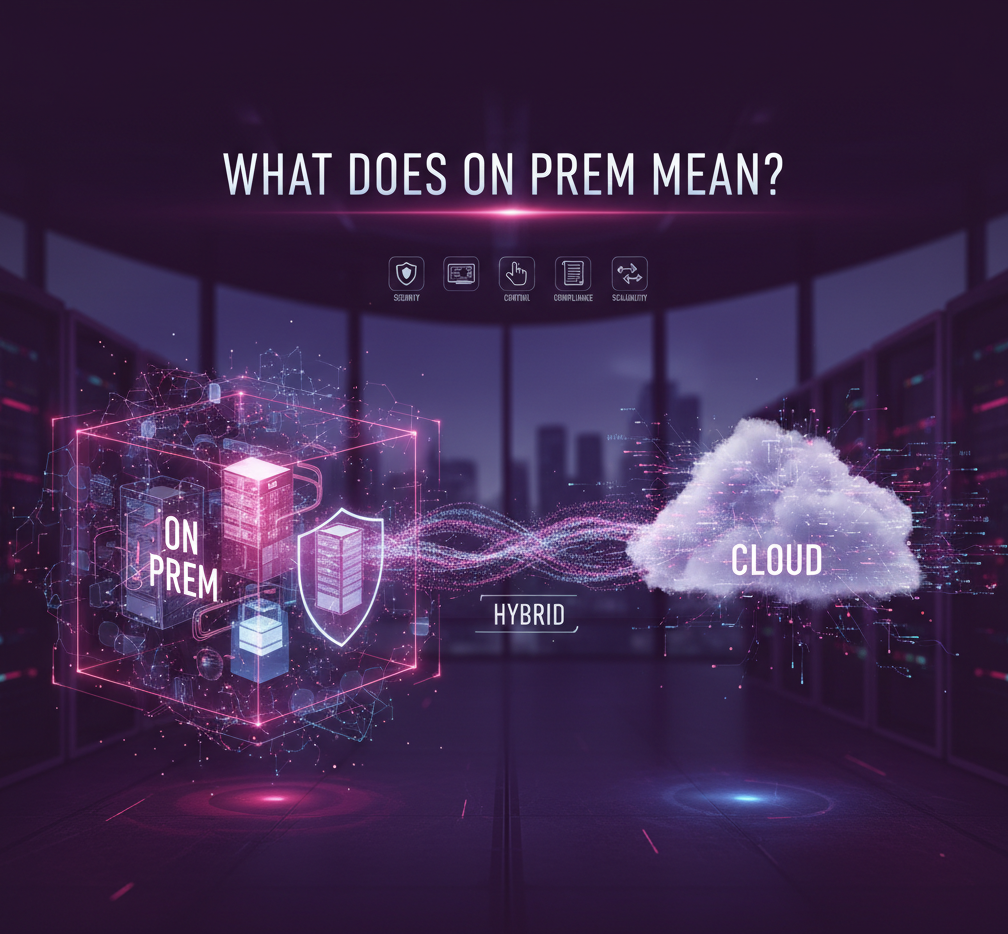In a time when everyone seems to be talking about the cloud, the concept of on prem hasn’t gone away. In fact, it’s making a quiet comeback. From banks to hospitals to government agencies, organizations still see value in running critical systems within their own walls. But before we jump into trends and technologies, let’s get back to basics: what does on prem mean, and why is it still a big deal?
What Does On Prem Mean?
At its simplest, what is on prem? It’s short for on-premises-technology that lives physically inside your organization rather than in a public or private cloud. Servers, storage, networking gear, and even software licenses fall into this category.
So, what does on prem mean for your business? It means control. You decide who can access your data, how it’s stored, and when it’s updated. For industries with tight regulatory frameworks, that level of control isn’t optional-it’s required.
Still, on prem isn’t just about compliance. Many companies prefer the predictable performance, the ability to customize, and the peace of mind that comes with having sensitive workloads close to home.
Benefits of On Prem
If you’re trying to explain to a non-technical colleague what is on prem, it’s helpful to compare it to the cloud. Cloud is like renting a house-you get flexibility, but you’re still living in someone else’s property. On prem is like owning your home-you take on the maintenance costs, but you make the rules.
Here are the biggest advantages:
- Security and compliance: With on prem, you don’t have to worry about where your data physically resides.
- Customization: Want a highly specialized configuration? Easier when you own the stack.
- Predictability: No surprise bandwidth bills or vendor lock-in.
That said, what does on prem mean in practice also includes higher upfront costs and ongoing maintenance. The trade-offs are real.
On Prem vs Cloud
It’s impossible to talk about infrastructure today without addressing on prem vs cloud. The choice isn’t always obvious. Cloud shines when you need speed and scalability, while on prem provides control and compliance. Many organizations adopt a hybrid model, using cloud services for customer-facing apps and on prem for sensitive data.
When explaining to executives what is on prem, it’s important to position it as part of a bigger strategy rather than the opposite of cloud. The future isn’t about one replacing the other—it’s about finding the right balance.
SASE
When you think about on prem security, the conversation naturally drifts toward modern frameworks like SASE (Secure Access Service Edge). While SASE is often associated with cloud-first models, it also complements on prem deployments. By unifying networking and security services into one model, organizations can extend strong protections to both local and cloud-based environments.
Identity-Based Segmentation in Hybrid and Multi-Cloud
The question of what is on prem often arises in hybrid strategies. Companies rarely live in a purely cloud or purely on-prem world. They use both. That’s why Identity-Based Segmentation in Hybrid and Multi-Cloud is gaining traction. By segmenting based on user and device identity, businesses ensure that whether workloads run on prem or in the cloud, access is controlled and threats are contained.
Why Network Segmentation Alone Isn’t Enough
Traditional firewalls and VLANs once defined on prem security. But Why Network Segmentation Alone Isn’t Enough is clear: attackers bypass perimeter defenses through stolen credentials, phishing, or insider threats. Modern organizations need layered defenses that integrate with both cloud and on prem environments.
PAM
Another piece of the on prem puzzle is PAM (Privileged Access Management). With so many critical systems still running locally, controlling who has admin-level access is non-negotiable. PAM tools enforce the principle of least privilege, ensuring sensitive systems stay secure, whether they’re running in a data center or on a server under someone’s desk.
Conclusion
So, what does on prem mean in 2025? It’s not a relic of the past. It’s a critical part of a balanced IT strategy. Whether you’re explaining to colleagues what is on prem or evaluating your next infrastructure investment, the truth is clear: cloud might dominate the headlines, but on prem continues to provide the stability, control, and compliance many businesses can’t live without.
The smartest path forward isn’t to abandon on prem, but to integrate it-securing it with modern tools like SASE, PAM, and identity-based segmentation, while acknowledging that no single model wins on its own.





